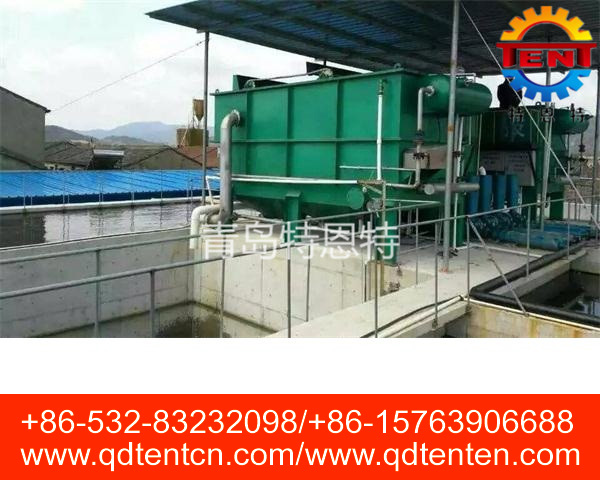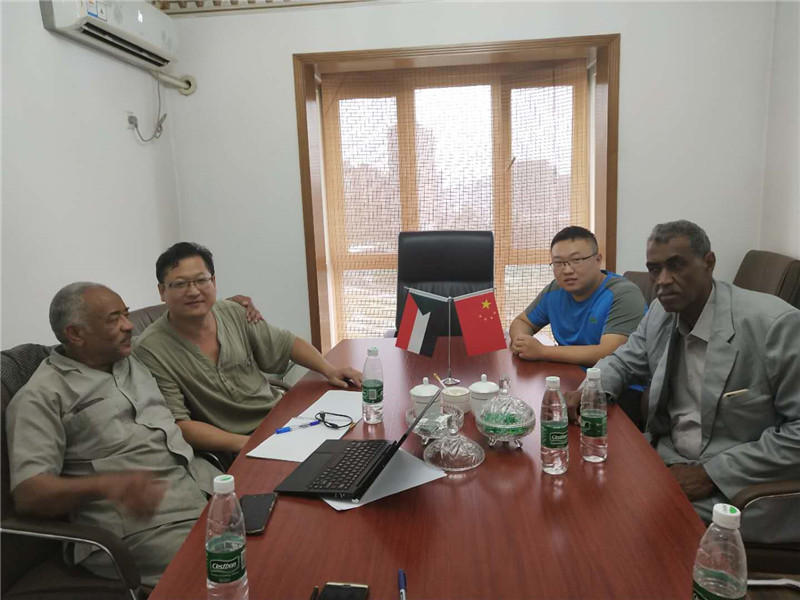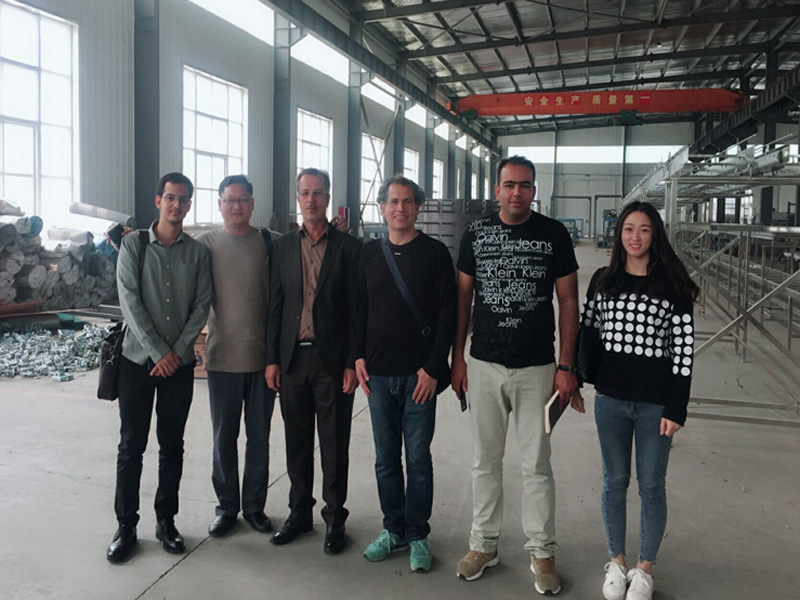Slaughtering of Sewage Treatment Equipment

details
It is made of glass fiber reinforced plastic, carbon steel and stainless steel. Placed below the surface, the surface above the equipment can be used for afforestation or other land use, no building and heating, insulation. The system integration is realized to the maximum extent and the land area is reduced. No pollution, no noise, no odor, reduce secondary pollution; Not limited by the amount of slaughter sewage, flexible, can be used individually or jointly; It is highly targeted and can effectively remove organic matter and ammonia nitrogen from slaughtering sewage. The whole slaughter sewage treatment equipment treatment system is equipped with PLC automatic electric control system and equipment failure alarm system, which is safe and reliable in operation. Generally, no special person is required to manage the equipment, only timely maintenance and maintenance of the equipment, and the management cost is small.
1�?/SPAN>Introduction to Slaughtering Sewage
The slaughtering sewage mainly comes from the sewage generated by the processes of rinsing, rinsing, washing, slaughtering and other factory floor, washing, ironing, dissection, processing of auxiliary food and washing oil.
Water quality characteristics: the slaughtering sewage is generally reddish-brown and has a bad smell. It contains a large amount of blood pollution, grease, wool, meat scraps, bone chips, internal debris, undigested food, excrement and other pollutants. The content of solid suspended matter is high. Potassium slaughtering sewage has high organic matter content, good biochemical property, high concentration of organic matter is not easy to be degraded, and it is difficult to be treated. Nutrients in this sewage are mainly nitrogen and phosphorus, of which nitrogen mainly exists in the form of organic matter or ammonium salt, and phosphorus mainly exists in the form of phosphate.
According to the characteristics of slaughter sewage and treatment difficulties, the general design idea is:
�?�?/SPAN>Primary treatment: the discharged wastewater flows through two thick and thin grille successively, mainly removing the large suspended matter and floating matter, preventing the blockage of machinery equipment such as sewage lift pump. Then it flows into the grease trap. The waste water contains sediment, which can be removed by natural precipitation. The sediment is pumped into the sludge concentration tank regularly by sludge pump. The oil floats on the surface and can be retrieved manually. Due to the large fluctuation of wastewater water quality and water quantity, to ensure the follow-up treatment effect and operation stability, an adjustment tank is set up in the treatment process to equalize water quality. Keep the system running smoothly. The pH value of wastewater can also meet the requirements of the subsequent treatment process by regulating the homogenization of its own acidity and alkalinity in the pond. The blood pollution, grease and oil blocks contained in waste water can be effectively removed by coagulation gas floating.
�?�?/SPAN>Secondary treatment: for CODCr and BOD5, which are difficult to be degraded and have high concentration in slaughtering wastewater, they cannot be completely removed in the pretreatment process. Therefore, biochemical treatment is adopted for secondary treatment. The main purpose of hydrolysis and acidification pond is to decompose large organic matter into small organic matter so that it can be further removed in aerobic process.
�?�?/SPAN>Level-3 treatment: after aerobic treatment, the water will be discharged and overflow into the sedimentation tank. After precipitation, the clean water will enter the disinfection tank. Sludge in the sedimentation tank will be pumped into the sludge concentration tank regularly with the mud pump.
Process flow: the sewage from the slaughterhouse flows into the grease trap after removing the wool, leather, slag and large particles suspended in the sewage through grille (net).
Slaughtering sewage treatment process: after removing most of the grease and mud sand, it enters the regulating pond, and after adjusting water quality and water quantity in the regulating pond, it ensures the normal operation of the subsequent treatment facilities. The water in the regulating tank is pumped up to a horizontal flow air floatation and precipitation unit. Early removal of suspended solids (ss) in water, the removal rate of more than 90%, the water into the integrated wastewater treatment equipment, the integration of sewage treatment equipment by hydrolysis (acidification, secondary contact oxidation pool, pool of sedimentation tank), sewage in acidizing hydrolysis acidification pool, macromolecular organic matter into low molecular organic compounds by anaerobic bacteria; After the hydrolysis and acidification tank flows into the contact oxidation tank for biochemical reaction, the effluent enters the sedimentation tank, and the effluent is filtered and disinfected to meet the standard discharge.
2�?/SPAN>Analysis on application of slaughtering wastewater treatment technology
Considering the water quality characteristics of slaughtering sewage and comparing the advantages and disadvantages of various treatment methods, it is concluded that the most economical and effective treatment technology of slaughtering sewage at present is mainly biological method and auxiliary necessary physical and chemical methods for pretreatment. For example, the secondary SBR process with biological treatment as the main body has better effect. In the north, especially in the economically underdeveloped north, the deep-well aeration method is the preferred method, considering the low temperature, small footprint and low operating cost.
The cost of anaerobic biological treatment is low, but the ammonia nitrogen cannot be removed well. Therefore, in the case of high water quality requirements, after anaerobic treatment, it is usually necessary to carry out aerobic treatment or use chemical method to remove ammonia nitrogen to meet the water quality discharge requirements. Aerobic method can not only get high CODcr removal rate, but also can remove nitrogen and phosphorus, but the cost is very high, so for the high concentration of slaughter wastewater, usually by the anaerobic biological treatment, first and then use the method of aerobic treatment, integrated the advantages of using anaerobic anaerobic-aerobic biological method, can obtain high CODcr removal rate, removal of nitrogen and phosphorus at the same time, also reduce the cost.
The recycling and utilization of slaughtering wastewater can be considered by using biological method. After a certain treatment, activated sludge can be used as animal feed material, protein and fat can be recovered from slaughtering sewage, the product can be used as animal feed, and biogas and harmless fertilizer can be produced. It is a sustainable development project with a virtuous cycle of ecological balance. The management experience of slaughtering sewage has a good reference value for the treatment of urban and aquaculture fecal pollution.
3�?/SPAN>The theory of slaughtering of sewage treatment equipment
Due to slaughter wastewater containing a certain amount of large pieces of debris (blood, fur, dye stuff, etc.), so use first grille shall be stopped and to ensure the normal operation of the follow-up device, because the slaughter wastewater containing bloodstains, grease and other macromolecular organic matter, directly into the aerobic will be difficult to degradation, so the grille of the water into the septic tank.The existing septic tank in the slaughterhouse can achieve a certain treatment effect, but the current discharge water concentration is still high and some grease is carried in it. In order to reduce the load of the subsequent treatment facilities, a grease trap is added at the front end to remove the grease. Slaughterhouse because of their working time, it's different with other sewage drainage cycle period, its emissions are mainly concentrated in the night, so you must set up the regulation of a larger pool to adjust water in order to ensure the normal operation of the whole set of facilities, reduce the impact of load on a subsequent facilities, sewage collection by adjusting pool and then through the pump into the subsequent treatment facilities.Sewage after dealing with the front-end septic tanks, sewage still contains most of the macromolecular organic pollutants, so need to be further to the degradation of small molecules, in preparation for the subsequent aerobic biochemical, and considering the ammonia nitrogen and total phosphorus in sewage, must therefore be facilities aerobic, anoxic environment to achieve alternately nitrification - denitrification alternating operation to achieve the effect of nitrogen and phosphorus, here by setting the hydrolysis acidification pool parts of subsequent aerobic treatment water back into the hydrolysis acidification pool. After the sewage is hydrolyzed and acidized, it enters into the aerobic pond, where the aerobic pond is divided into two sections. Its advantage is that in different aerobic sections, microbes present spatial distribution according to different environments, which is targeted and has better removal effect.After the sewage is treated by various biochemical treatment facilities at the front end, the load of organic pollution is degraded to a large extent. However, the chromaticity in the sewage is still difficult to reach the standard. In order to remove the chromaticity, the reduction of COD and the reduction of ammonia nitrogen and total phosphorus are also considered. The sedimentation tank gives off water, goes into the sterilization tank, and finally reaches the standard discharge.
4�?/SPAN>Scope of application of slaughtering sewage treatment equipment
It is suitable for small and medium-sized slaughtering enterprises and meat products processing plants, such as slaughtering chickens, slaughtering pigs, slaughtering ducks, slaughtering cattle and slaughtering sheep.
5�?/SPAN>Characteristics of slaughtering wastewater treatment equipment:
�?/FONT>1�?/SPAN>The slaughterhouse wastewater is rich in a lot of floating objects (blood, fur, debris, dye, etc.) which can be stopped by grille to ensure the normal operation of subsequent equipment, which is now available in the slaughterhouse.
�?/FONT>2�?/SPAN>Slaughtering waste water is rich in blood pollution, oil and other macromolecular organic matter, and it will be difficult to degrade directly into good oxygen, so it will enter the septic tank after the grid is out of water.
�?/FONT>3�?/SPAN>The existing septic tank in the slaughtering waste water treatment plant can achieve a certain treatment effect, but its effluent concentration is still high and some grease is carried in it to reduce the load of the subsequent treatment facilities. An oil-water separation grease trap can be added at the front end to remove the grease.
�?�?/SPAN>Slaughterhouse because work time factor, the drainage cycle is different from other wastewater discharge cycle, mainly nocturnal emissions, you must set up the regulation of a larger pool to adjust water in order to ensure the normal operation of the whole set of facilities, reduce the impact of load on a subsequent facilities, wastewater collection and then through the pump by adjusting pool into subsequent treatment facilities.
Generally, the two main methods for pretreatment of slaughter wastewater are: air floatation and filtration (filtration pore diameter 1-5mm). Air floatation is mainly applied to treatment stations with small amount of waste water. Sieve filtration is mainly applied to pretreatment of slaughter wastewater with large amount of waste water. Slaughter wastewater of organic matter is mainly for the protein and fat, these long chain organic macromolecule material, it is difficult to be general aerobic bacteria use directly, in the process of its biodegradation, first commonly by enzyme breaks down into amino acids, carbohydrates and other small molecule organic matter is rear can be directly use aerobic bacteria, so the hydrolysis acidification process in the slaughterhouse wastewater treatment equipment is necessary to set up.
6�?/SPAN>Slaughtering wastewater treatment process
�?/FONT>1�?/SPAN>Slaughter wastewater treatment equipment: after dealing with the front-end septic tank, still contain most of the macromolecular organic pollutants in wastewater, needs further to its degradation of small molecules, in preparation for the subsequent aerobic biochemical, and considering the ammonia nitrogen and total phosphorus in waste water paint, must facilities aerobic, anoxic environment to achieve alternately nitrification - denitrification alternating operation to achieve the effect of nitrogen and phosphorus, here by setting the hydrolysis acidification pool parts of subsequent aerobic treatment water back into the hydrolysis acidification pool.
�?/FONT>2�?/SPAN>After hydrolysis and acidification, the waste water enters into the aerobic pond, where the aerobic pond is divided into two sections. Its advantage is that in different aerobic sections, microbes present spatial distribution according to different environments, which is targeted and has better removal effect.
�?/FONT>3�?/SPAN>After the wastewater is treated by various biochemical treatment facilities at the front end, the load of organic pollution is degraded to a large extent. However, the chromaticity in the wastewater is still difficult to reach the standard. In order to remove the chromaticity, the coagulation sedimentation tank can be set up and targeted agents can be added to remove the chromaticity
�?�?/SPAN>Secondary backwash sedimentation tank water, enter the sterilization tank for strict disinfection, and finally meet the standard of discharge.
CONTACT US
+86-532-83232098
E-Mail:sales01@qdtent.com
addr:No. 1, Minan Road, Jiaoxi Industrial Park, Jiaozhou, Shandong, China
















